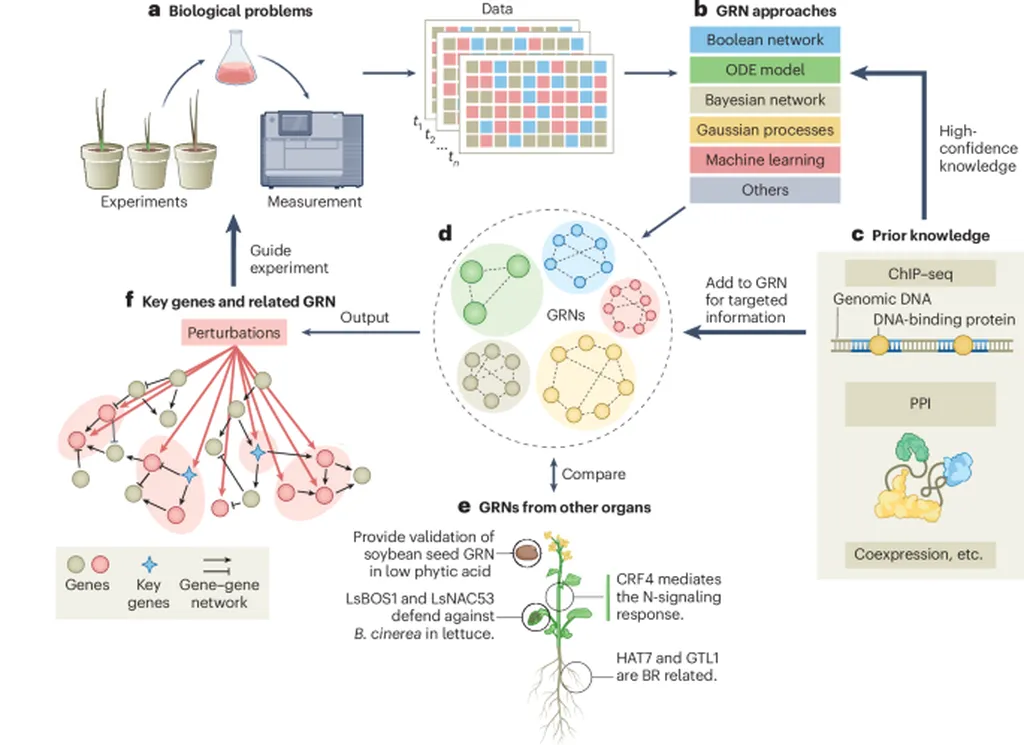In the quest to develop climate-resilient crops, a team of researchers led by Xiwang Xu from the School of Agriculture and Bioengineering at Foshan University in China has made significant strides in understanding the rapid alkalinization factor (RALF) gene family in peas (Pisum sativum L.). Their work, published in the journal *Plant Stress* (translated to English as “Plant Stress”), offers promising avenues for enhancing the resilience of this important legume crop.
Peas, a vital source of plant-based proteins, are particularly sensitive to environmental stresses such as drought, salinity, and aluminum toxicity. These stresses can significantly impact yield and quality, posing challenges for sustainable agriculture. The RALF gene family has been implicated in various aspects of plant growth, development, and stress responses, but its role in peas has remained largely unexplored until now.
Xu and his team identified eight PsRALF genes in the pea genome, each exhibiting unique structural features and evolutionary relationships. Through chromosomal localization and collinearity analyses, they uncovered both conserved and lineage-specific duplication events, suggesting a complex evolutionary history. “This diversity within the PsRALF family indicates that these genes may have evolved to perform specialized functions in response to different environmental cues,” Xu explained.
One of the most intriguing findings was the identification of stress- and hormone-responsive cis-elements in the promoters of these genes. This suggests that PsRALF genes are not only responsive to abiotic stresses but also play a role in hormonal signaling pathways, which are crucial for plant adaptation to adverse conditions.
Under abiotic stress conditions, the researchers observed significant upregulation of PsRALF2, highlighting its potential as a stress-responsive candidate. “PsRALF2’s robust response to drought, salinity, and aluminum toxicity makes it a promising target for breeding programs aimed at enhancing stress tolerance in peas,” Xu noted.
The subcellular localization predictions revealed that most PsRALF proteins are extracellular, with one member targeted to the chloroplast. This diversity in localization suggests that PsRALF proteins may have multifaceted roles in plant physiology and stress responses.
Additionally, the researchers found that all analyzed PsRALFs possess prion-like domain (PrD) features, which may drive protein aggregation or liquid-liquid phase separation (LLPS). These mechanisms could regulate signaling functions, adding another layer of complexity to the potential roles of PsRALF proteins in plant stress responses.
This comprehensive analysis of the PsRALF gene family in peas provides a valuable resource for crop breeders and genetic engineers. By understanding the roles of these genes in stress tolerance, researchers can develop strategies to enhance the resilience of pea varieties, ensuring a stable supply of plant-based proteins in the face of climate change.
As Xiwang Xu put it, “Our work bridges a critical knowledge gap in legume stress biology and lays the groundwork for future genetic engineering or marker-assisted selection to develop climate-resilient pea varieties.” This research not only advances our understanding of plant stress responses but also paves the way for innovative solutions to meet the growing demand for sustainable agriculture.
With the findings published in *Plant Stress*, the scientific community now has a clearer picture of how the RALF gene family contributes to stress tolerance in peas. This knowledge is poised to shape future developments in crop breeding and genetic engineering, ultimately benefiting farmers, consumers, and the environment alike.

